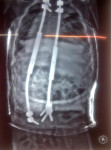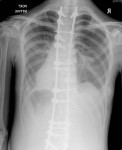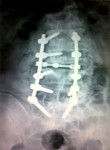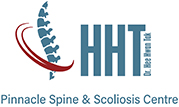Scoliosis Treatment Options
Scoliosis can happen at birth or degenerate as one becomes older. This article lists the different scoliosis treatment options, depending on your age and health conditions.
Growing Rod For Early Onset Scoliosis
Early onset scoliosis can be a challenge to treat, as it may also involve other body systems e.g. lung development. Some of the scoliosis appears from birth i.e. congenital, and thus may also have problems affecting their heart, esophagus (food channel), anus, trachea (windpipe), kidney, and arms/legs. These types of conditions often respond poorly to scoliosis treatment such as braces and can be rapidly progressive, as there is a rapid growth spurt between birth and 5 years of age.

Scoliosis treatment such as performing definitive fusion will stunt their growth. Growing rod is a good scoliosis treatment option to control such spinal curves till the child is more mature for a final definitive fusion (Figure 1). Growing rods need to be lengthened periodically every 6-12 months. A modification of this method is the use of SHLLA procedure, where periodic lengthening is not routinely required. Another option is the use of VEPTR (vertical expandable prosthetic titanium rib) which has the bony anchors on the rib cage instead of the spine. This method is good if the child also has associated developmental issues regarding the lungs and rib cages.
Minimally Invasive Correction of Scoliosis
In selected cases of scoliosis where there is only one significant curve to be operated, there is a possibility of using minimally invasive methods to correct scoliosis. This can be done through small incisions with the help of real-time x-ray images.
Correction of Severe Scoliosis

Correction of severe scoliosis often involves lengthy procedures and may include front and back approaches as well as major bony resection (Figure 2). Sometimes, the scoliosis treatment may have to be staged i.e. two surgeries performed 5 to 7 days apart to allow your body to recover somewhat before the next surgery.
Sometimes, in the intervening period between two surgeries, we may apply traction (pulling force) on your spine in order to get some correction before the second operation.
Occasionally, we may even admit your child before the first surgery to apply the traction.
Decompression and Fusion for Degenerative Scoliosis

Degenerative scoliosis i.e. scoliosis occurring in the middle-aged and elderly are increasing seen due to the aging population. They can be disabling as they cause deformity, back pain, as well as leg pain due to “pinched” nerves. If you are in this group and have not improved significantly with conservative treatment and spinal injections, surgery can be a good choice if your medical condition permits. Preoperative evaluation will be conducted to assess your fitness for surgery.
In such cases of a long-standing “crooked spine” (Figure 3), common complaints will include back pain, stiffness, and fatigue, as well as increasingly worsening leg symptoms such as numbness or pain. The leg symptoms appear because of the gradually worsening compression of the nerves from the bulging disc, “swollen” joints of the spine, bone spurs, and thickened ligaments of the spine. Because of increasing pain, tingling, numbness, and/or weakness, the quality of life of the patient affected will deteriorate over time.
Hence, the objective of scoliosis surgery in such case will be to free the nerves of external compression, thereby allowing a better environment for the nerve(s) to recover. Stabilization using titanium screws and rods may be needed to “hold” the crooked spine and prevent it from bending further. With modern surgical methods, very often, the crooked spine can be made less prominent after surgery, with consequent improvement in the balance of the spine and surrounding muscles, and also improved body image.
There are variations in the surgical methods used to address this increasingly common problem in our aging population. The simplest surgical option will be simply freeing the nerves of compression, without additional stabilization. This is usually done very selectively, as only a minority of crooked spine cases are suitable for this option. The most common option used will be decompression of the nerves involves, as well as stabilization of the levels affected by the nerve compression, without addressing the entire deformity of the spine. The third option involves freeing the nerves as well as stabilizing the entire spinal deformity. Sometimes, resections of the bone at the most severe portion (apex) are done to correct the deformity.
Our specialist Adjunct A/Professor Hee Hwan Tak is a renowned spine surgeon with much experience treating scoliosis safely and successfully. Contact us for a comprehensive consultation.
